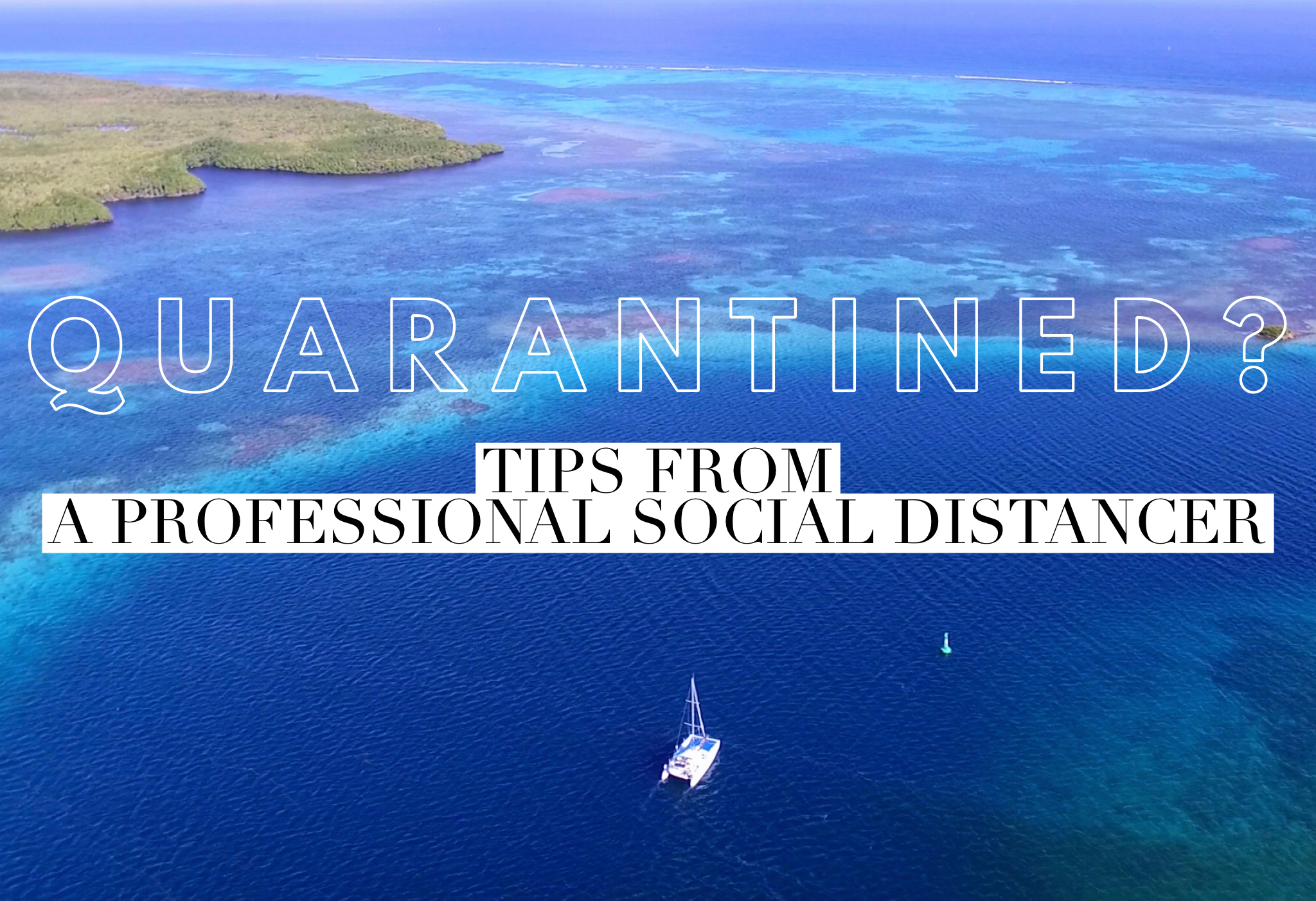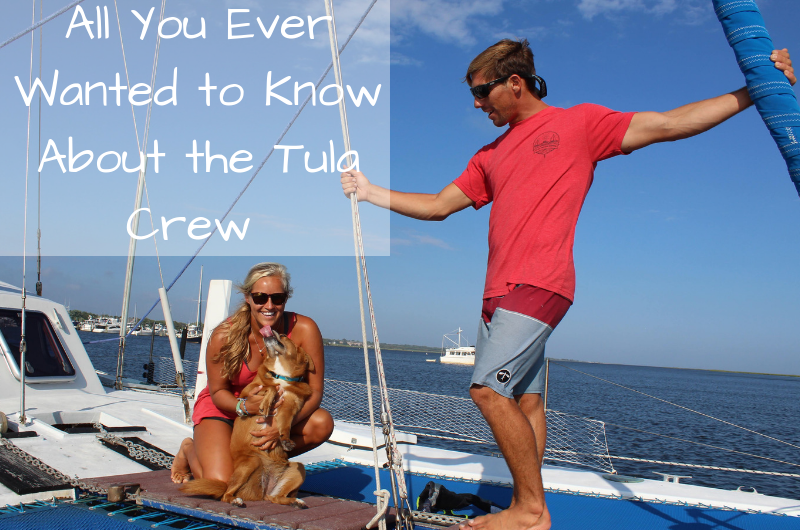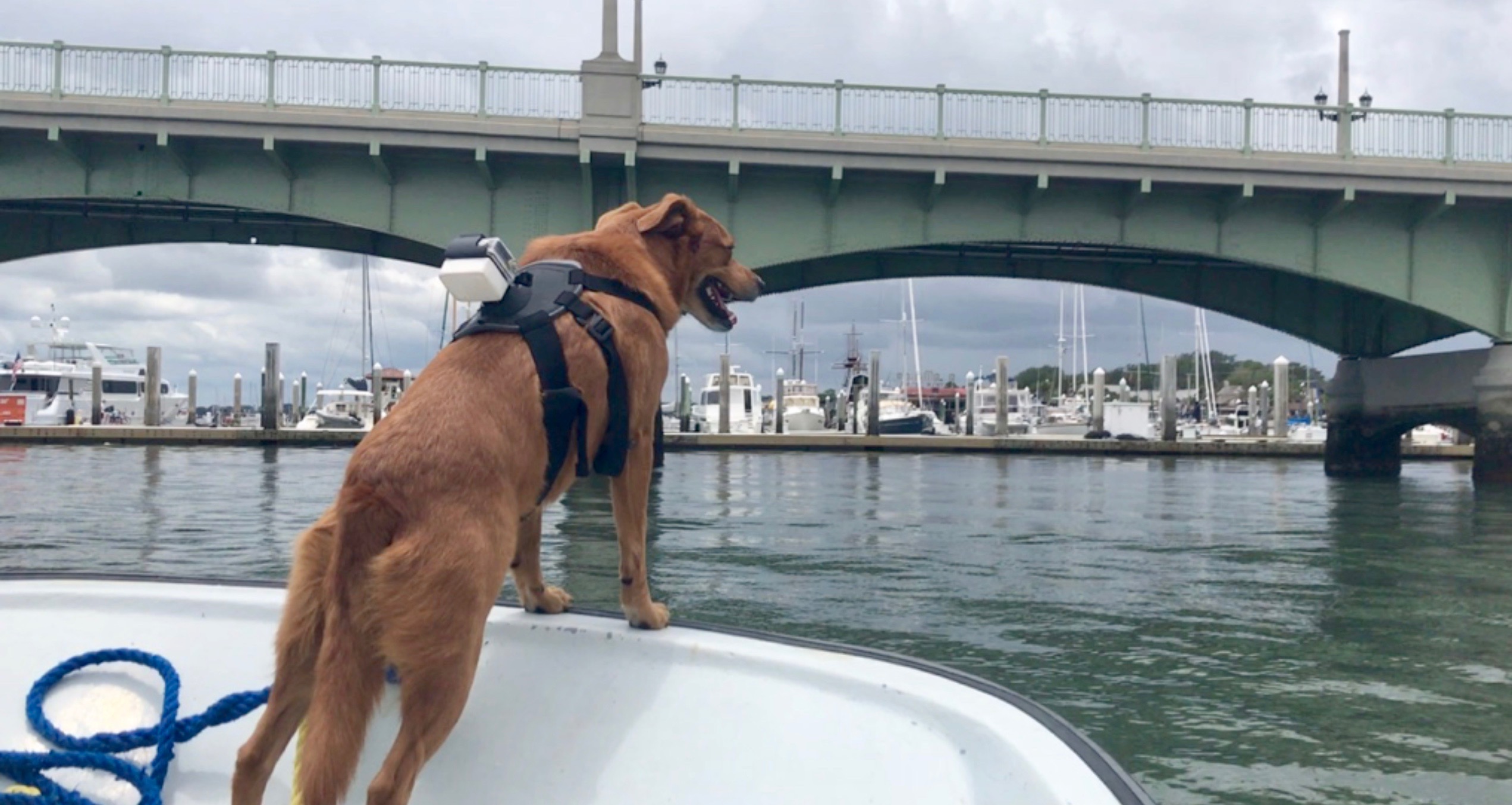We have recently made the jump to not only sail the U.S. east coast and the Bahamas but also venture down the Caribbean. This adventure will include more long passages, crazy currents, and the relentless trade winds. This article is here to explain what sailing safety gear we have on board and why we have it. I hope it can help you when you are deciding what gear you should have.
Sailing Safety Gear
Personal Safety Measures
Jacklines
The most dangerous situation on any boat is a man overboard. A jackline is a rope or wire strung from a ship’s bow to stern to which a safety harness can be clipped.
We do our very best to prevent a man overboard by clipping into the jacklines if we have to move around the boat while underway at night or in any rough conditions. We also tether ourselves in the cockpit for extra security measures. Jacklines allow us to move about the deck safely when there is a risk of falling or being swept overboard. If you plan on sailing offshore jacklines are a must!
PFD’s
We always wear our Onyx Impulse A-33 PFD’s just in case! We opted for these PFD’s because they are super low profile which means they do not get in the way. They also automatically inflate upon submersion.
If you would like to see our jackets automatically inflate check out the video in the CrewWatcher section of this article (9:41 in the video). We inflated it on accident…
The PFD’s we chose are one of the more expensive on the market but their low profile, automatic inflation, and harness features make them worth it. No matter what type of PFD you go with make sure you have one that fits each person on board and always keep them in an accessible place.
Personal Rescue Strobe

We each have a personal rescue strobe attached to our PFD. If one of us fell over at night these strobes would make it much easier for the other person to relocate them. It would also help professional rescuers find the victim at night. We chose this specific strobe because it has a range of 2+ miles, has a heavy-duty unbreakable lens, and is four times brighter than the average strobe of its comparable size.
Crew Watcher
Along with our strobes, we also have a CrewWatcher attached to our PFD’s. CrewWatcher is an app-based crew overboard alarm system. The system is Bluetooth based (no cell service required) which means we can use it on any passage no matter how far from shore. The alarm triggers automatically in a man overboard event. Should one of us go overboard, after sounding the alarm, the app will automatically provide lat/long coordinates of where the person went over.
This is a great compliment to other MOB alert systems. It is also a simple and affordable option if you do not have a built-in MOB alert system. Aside from being a crew overboard system for us humans we also put one on our dog’s PFD. If you tow a dinghy it could also potentially alert you if the painter snapped. We have found many awesome uses for this device and we think you will too.
If you are interested in how it works watch our review ↓
Safety Communications
VHF Radio

VHF radios have many important uses. Communicating with others, checking the weather, and if the situation arose, hailing for help. There are many different types with a variety of features. The VHF we have came with the boat and is a basic fix mount VHF. It is one of the cheapest fixed mounts on the market and has limited features but it seems to work well.
Everyone should also have a floating waterproof handheld VHF on board. This will serve as a backup if anything were to happen to your fixed set and also allows you to bring a VHF on any dinghy excursion. You can spend anywhere from around $100 to close to $1000 on a VHF radio. The more you spend the more features and longer range you get. If you need to purchase a new VHF and are also considering adding an AIS system to your boat consider looking at the systems that combine the two. You will save money buying one unit that does both rather than paying full price for both devices separately. Although, you may loose some functionality combining the two.
Delorme Satellite Tracker
This tracker gives us the option to check the weather even in the middle of the ocean. It also allows us to text family and friends to let them know our whereabouts. Most importantly it has an interactive SOS function. If we were in a life-threatening situation we could activate the SOS feature and the proper rescue authorities would be notified. With the interactive SOS feature, we would be able to stay in touch throughout the rescue process and know the ETA of the responders. The inReach is connected to the Iridium network which is the world’s largest satellite constellation. It is the only satellite network that provides 100% global coverage.
The device is under $300 and has different service options depending on your needs. We use the basic freedom plan which allows us to cancel our contract with 30 days notice so when we are not on the move we are not paying. Having this on board gives us peace of mind knowing we can always get in contact with family and emergency personnel.
Ocean Signals EPIRB
This is one of those things we ALWAYS have on board but pray we never have to use. EPIRB stands for Emergency Position Indicating Radio Beacon. It is a safety device you carry onboard to alert search and rescue services, allowing them to quickly locate you in the event of an emergency. When activated the EPIRB transmits a distress alert which is picked up by satellites. As each satellite passes over the active EPIRB it calculates the EPIRB’s approximate location. The satellites then pass the received distress alerts to Cospas-Sarsat headquarters (to learn more click here). From the headquarters, it is then passed to the relevant National Rescue Coordination Centre. If your EPIRB is registered (which it should be) the rescue teams will have your personal information and boat details to help them know what they are looking for. Moral of the story, don’t leave the dock without one.
Why the EPIRB1?
We chose the Ocean Signals EPIRB1 because it is the most compact EPIRB on the market, auto activates on submersion, 10-year battery life, and most importantly fast accurate positioning with GPS.
GPS fitted EIPIRB’s provide safety authorities with a more accurate position and are faster at passing the positions onto safety personnel. Your position is immediately relayed to rescue authorities rather than waiting for an appropriate satellite to pass overhead. This time could be the difference between life and death, especially in cold water.
A little more about EPIRB’s
There are two different bracket categories of EPIRB’s, Category I and Category II.
Category I brackets are automatically deployed. This means the bracket is designed to release the EPIRB when the hydrostatic release unit in the bracket is submerged in water to a certain depth. If a ship is sinking, the EPIRB with release from its bracket and float to the surface where it will alert search and rescue.
Pro: Automatically deploys if a ship is sinking
Con: Hydrostatic release unit needs to be replaced every two years
Category II brackets need to be manually released.
Pro: Can be kept in a ditch bag, more affordable, no need to worry about replacing the bracket
Con: Virtually useless if a boat sinks and the EPIRB goes down with it
We opted for the category II so we would not have to worry about replacing the hydrostatic release unit and because we could keep the EPIRB on our Ditch Kit (more info on this below).
Other Important Gear
Fire Extinguisher
Fires can happen without warning, this is why we have multiple extinguishers around the boat. Extinguishers are classified by a letter and number symbol. The letter indicates the type of fire the unit is designed to extinguish. Boats are required to have Type B extinguishers. These extinguishers are designed to extinguish flaming liquids, such as gasoline, oil, and grease. The number indicates the amount of the extinguishing agent contained in the extinguisher. The higher the number, the greater the amount of agent the extinguisher contains. The number of extinguishers required on board depends on the size of your boat. More info on regulations can be found here.
Fire extinguishers should be kept in easily accessible places but not in an area where a fire could start. We have one in each hull as well as in the main cabin area.
Visual Distress Signals

We recently upgraded to an SOS Distress Light from conventional flares. This electronic flare floats and can be hand-held, tethered, or hoisted aloft. It flashes only the SOS light sequence and is visible for up to 10 nautical miles. Upgrading was an easy decision! With the SOS Distress Light, there are no expiration or disposal issues unlike conventional flares and it is easy to test. The package included a daytime distress signal flag so this combo meets all USCG requirements for day and night use.
Sound Producing Device
All vessels are required to have a sound producing device that is audible for one-half mile. In situations with low visibility or if you need to signal your intentions/position a sound producing device is essential. We have a bell as well as an air horn and multiple whistles scattered in handy spots around the boat. During a trip to New England on our trawler, we found ourselves in thick fog. To avoid a collision we had to sound our horn for one prolonged blast at intervals of not more than two minutes.
A list of sound signals you should know can be found here
Throwable device
Every boat should also have an easily accessible throwable floatation device. They are designed to be thrown to a person in the water, grasped, and held by the user until rescued. Throwable devices include buoyant cushions, ring boys, and horseshoe buoys. We keep a horseshoe buoy permanently fixed on our aft stanchion for easy access just in case.
Ditch Kit
If a life-threatening situation arises and abandoning ship is the only option then a ditch kit will be your lifesaver. A ditch kit is a positively buoyant bag or box that is filled with items that could save your life in emergency situations. We keep ours permanently packed and mounted in an easily accessible spot in the cockpit. Our ditch kit has a mount for our EPIRB and contains the following:
Handheld waterproof VHF , handheld GPS (battery operated), spare batteries, flares, signal mirror, flashlight, whistle, light stick, knife, fishing line, lures, duct tape, waterproof matches, first aid kit , seasick medicine, sunscreen, emergency water pouches, protein bars, small bag of dog food, small bowl, copy of passports, boat documentation, and money.
If you want a more in-depth look at our ditch kit click here.
Items We Hope to Add Soon
AIS Transponder
AIS (Automatic Identification System) is an automatic tracking system. The Ocean Signal’s Class A Transponder is capable of exchanging dynamic and static ship data with other AIS systems. Real-time marine traffic information is continuously displayed. You also receive alarm notifications of any potential problems including the deployment of a MOB device.
MOB Device

The best chance of rapid rescue if you fall overboard comes from your own boat. A MOB device communicates with the vessel you have been separated from and other vessels in the vicinity. The Ocean Signal MOB1 rapidly communicates your position back to the vessel it also provides visual contact via its built-in strobe light.
This is the list of sailing safety gear we have on our boat for the destinations we are sailing. There is always more safety equipment that could be added. However, we are confident that with the preventative measures we take and items we have on board we can survive until further help arrives or we reach safety.
What else do you keep on your boat?
Is there anything you think we NEED to add?
~Sierra













Thanks, Important info that I will put to use.